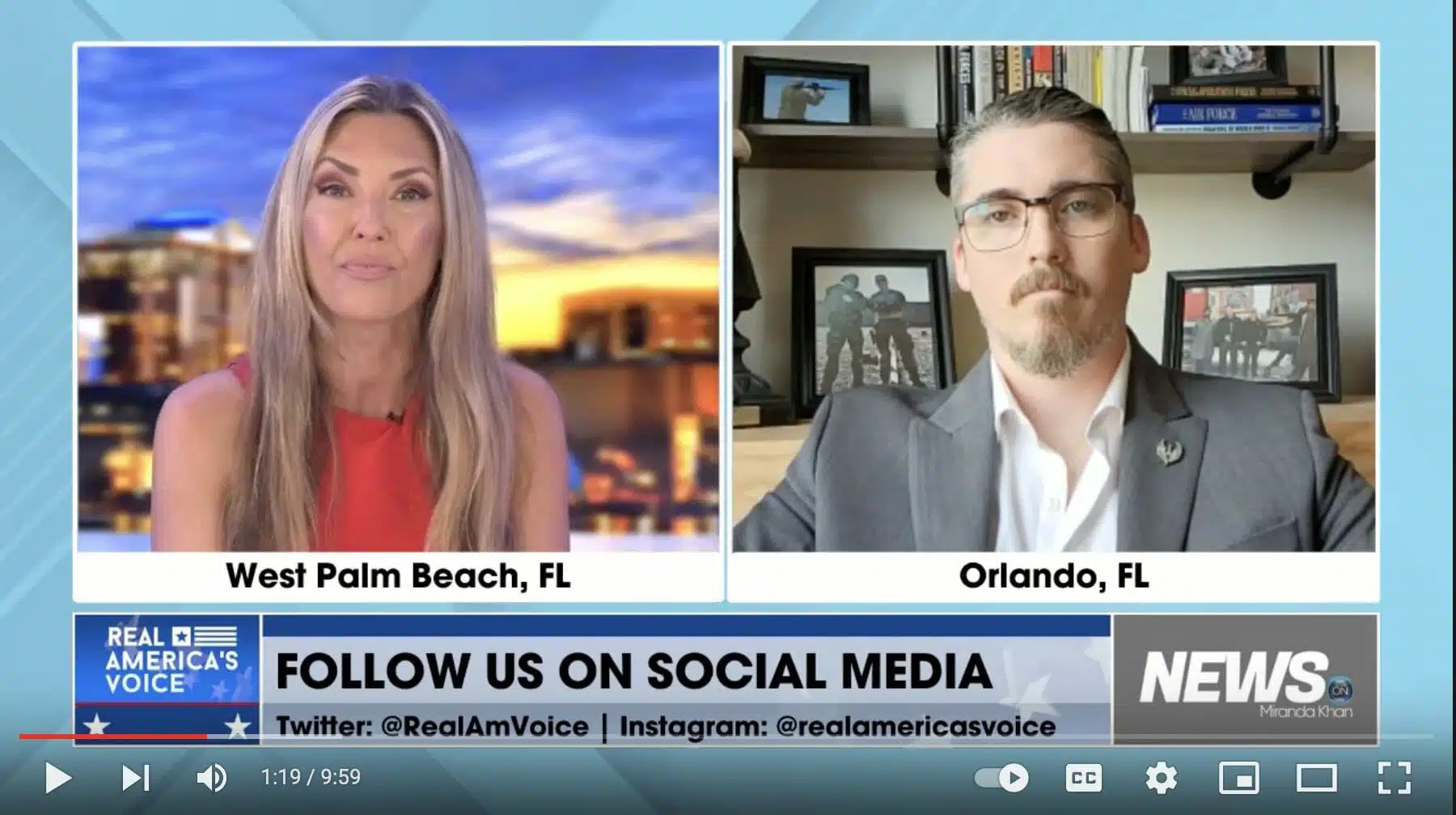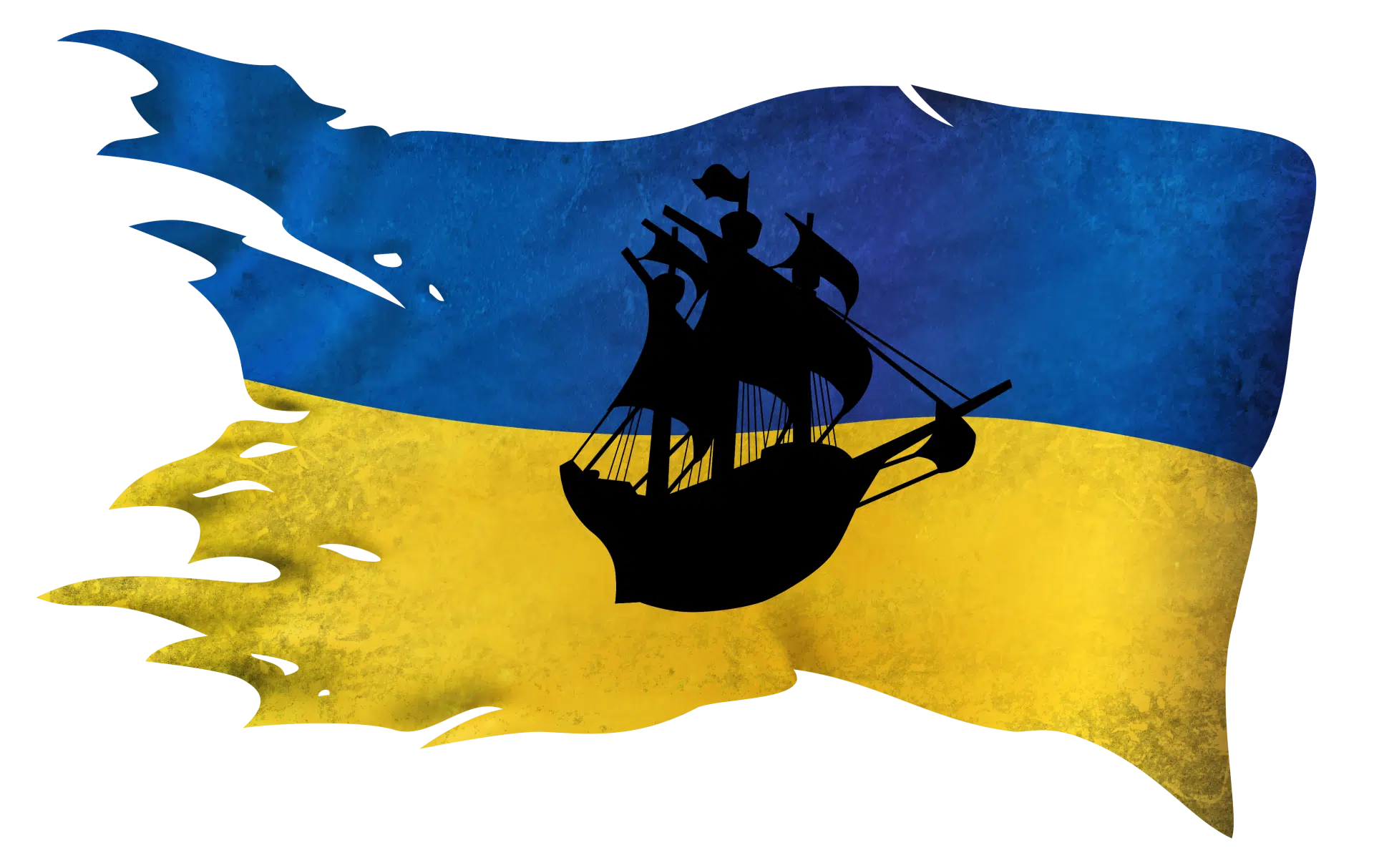Podcast with Dr. Jarrod Sadulski, Faculty Member, Criminal Justice and
Richard Ring, CEO, F3 Missing Children’s Intelligence Agency
In 2020, there were 365,000+ reports of missing children across the United States. Law enforcement agencies often do not have the resources, manpower or intelligence-based skillsets to bring these children back to their families. In this episode, AMU professor Dr. Jarrod Sadulski talks to AMU alumnus Richard Ring, CEO of F3 Missing Children’s Intelligence Agency, about bringing together intelligence analysts, retired special operations and military personnel, and retired federal law enforcement officers to help investigate missing children cases. Learn about the importance of using an intelligence-based approach to finding missing children and the challenges associated with investigating cold cases.
Read the Transcript:
Dr. Jarrod Sadulski: Hello, everybody, welcome. Today, we’re very fortunate to have our guest, Mr. Richard Ring. Welcome.
Richard Ring: Good morning.
Dr. Jarrod Sadulski: For our audience, Richard Ring is an alumni member of American Military University, where he is earned his MBA as well as a bachelor’s degree through American Military University, which is quite an accomplishment.
He’s also the CEO of F3 Missing Children’s Intelligence Agency, which is a 501(c)(3) nonprofit organization designed to reunite families with their children. They utilize analysts and investigators to identify children that have gone missing in cold cases, and they work closely with law enforcement, and their goal is to reunite children that have gone missing, which is really important work considering according to the FBI in 2020, there were over 365,000 NCIC entries for missing children, of that, research tells us that around 70% of children that are runaways are approached for trafficking.
The National Center for Missing and Exploited Children also found that in the same year there were 79 non-family abductions. There were some missing young adult abductions, as well as over 1,300 family abductions, and as well as there were 27,000 runaway children that were endangered. So very important work, but before we begin, Richard, would you mind introducing yourself?
Richard Ring: Absolutely. My name is Richard Ring. As you stated, Jarrod, I’m an alumni of AMU, received my MBA there in 2016. My background, I started as an Air Force Intelligence Analyst, worked with the B-2 Stealth Bomber platform as an all-source analyst, mostly conducting strategic level intelligence analysis against the big five countries: Russia, China, Iran, Syria, North Korea.
And then after about three and a half years of that, I underwent selection and assessment for one of the tier one JSOC units there, specifically one of the intelligence squadrons there, and was picked up by that squadron where I became a human targeting officer deployed with the other Army tier one units within JSOC targeting multiple lines of operation, counter-terrorism efforts.
And then after leaving active duty, after approximately eight years, switched to reserve capacity as a reserve targeting officer, where I still currently reside at U.S. Southern Command, mostly working in counter-threat finance, counter-terrorism, human trafficking, smuggling, etc. in the Latin AOR.
Dr. Jarrod Sadulski: Excellent. What brought you into the F3 Missing Children’s Intelligence Agency?
Richard Ring: So F3 Missing Children’s Intelligence Agency is actually a subsidiary. It’s our nonprofit branch of our larger company, which is F3 Intelligence Corp. It’s the premier domestic private intelligence corporation. We basically brought our skillsets from the government, what we used to do overseas, and we brought it into the corporate world through assembling essentially a dream team of various intelligence professionals, retired federal law enforcement of various specialties, and we created, essentially, a miniature intelligence agency.
And we work with top 100, primarily top 50 law firms, and then their clients, multiple verticals, whether it’s entertainment, industry, pharmaceuticals, banking, mergers and acquisitions, due diligence, primarily. So on the for-profit side, our actual parent company, we are a corporate intelligence firm by just happenstance ended up stumbling into the ability to use our skillset to find missing children, and we started our 501(c)(3) subsidiary of F3 Intelligence Corp.
Dr. Jarrod Sadulski: So from your experience, what are some of the most common factors that result in missing children?
Richard Ring: So we break down missing children into three categories. You have the stranger abductions. I think that’s what most people think of. That’s the classic 1980s white van with “Free candy” written on the side of it scenario. However, we try to educate people that that’s evolved, and there’s a new version of that that we can talk about that takes place primarily online in the chat forums, gaming sphere.
Then you have family abductions. That’s a rather large one that most people don’t think about. And then the third category being what we call endangered runaways.
The term runaway classically used by law enforcement in the public is incorrect. We term it as an “endangered runaway” because we try to remind people that it’s not normal for a child to leave their house and go out into the world with no money, no food, no security, not knowing where they’re going to be staying from night to night.
There’s something going on there in those situations that already puts them at high risk, and then by running away, they just become open to a multitude of threats, whether it’s environmental or people taking advantage of them. So we take the endangered runaways just as serious as familial abductions and stranger abductions.
Dr. Jarrod Sadulski: So you have a great point about the online dangers for children. In my line of work I primarily focus on human trafficking, and I know that yours is more broad than that, but they intersect when it comes to the dangers online, when it comes to children runaways, as well as human trafficking. What can you tell us in terms of the dangers online, and how parents can perhaps mitigate that danger?
Richard Ring: The scariest thing that we’ve seen throughout the years is that parents typically not only they have no clue what’s going on, I don’t even think they, it’s not about even not knowing who their children are talking to and interacting with, they don’t even know or understand the settings in which these are even taking place. I would argue not so much today, but maybe five years ago, that parents were even unaware of how online gaming worked, and that it was a community in which people were talking back and forth live around the world. I would say the average parent was not even tracking that.
Dr. Jarrod Sadulski: And I think social media too certainly has some implications when it comes to abductions or trafficking, because a lot of times the perpetuator will befriend the child. They will perhaps act and create a fake profile that imitates somebody that’s in the child’s same age group, as well as they will ultimately groom the child to get the child to run away. Excellent information. So can you explain the importance of law enforcement using NGOs such as yourself as a force multiplier in searching for missing children?
Richard Ring: So I like the fact that you use the word force multiplier, because that’s the word that we use, and it’s exactly what we are. Brought that term from the military, specifically within the special operations community. And law enforcement does what they do, and they do it very well, but there’s a lot of things law enforcement does not do by the very nature of being law enforcement, and I would say intelligence analysis is one of those things.
Let’s just take a law enforcement detective, for instance. When most people think of a detective, they think of what they see in the movies. They think of CSI. They think of Sherlock Holmes, but that’s not how most detective work is done.
Most detective work is by performing interrogations, interviews, interviewing eyewitnesses, getting people to confess, getting people to, for lack of a better term, rat on other people. And using authority to bring that pressure, and then also using their authority to be able to gain things that maybe somebody in the private sector couldn’t gain much more quickly, whether it be DOT data, cameras, things like that. But it’s very little of the CSI, putting all the clues together, and all the puzzle pieces on the table, and you’re trying to figure out what the picture is, and you’re missing half the puzzle pieces. That’s more what an analyst does.
And if anyone that’s watched a cold case show on TV, you’ll notice that they don’t typically get to that level of detective work until the case is 10 years old, and they’re reopening it because it’s cold, right? And that’s because law enforcement, they can only work cases for so long before it has to go back on the shelf.
And so utilizing NGOs, the two biggest factors I would say specifically with an NGO like ours is one, we’re bringing a different skillset, different personality types that necessarily wouldn’t be a police officer personality type, but that’s a good thing, and that’s why they’re a good analyst. So you’re bringing in different talent, and you’re bringing in different skill sets that law enforcement doesn’t have.
The other thing is you’re losing some of the bureaucracy, and the fact that we can work the cases as long as we want. There’s nobody telling us that, “Hey, you’ve got two weeks, and then you’ve got to put this on the shelf and move on, because we have other calls of service, and other cases that are backing up.” So NGOs are able to focus, and they’re able to specialize.
Dr. Jarrod Sadulski: That’s a great point. And it reflects how your average detective has a substantial case load. They have pressures on them to make as many clearances as they can, and if they’re unable to, it needs to get shelved, so that they can go onto the cases that they’re able to clear. Those are great points.
So can you explain, or what can you share with us in terms of how your organization investigates missing children cases, and the background of your analysts, investigators, that they’re able to utilize their backgrounds to deploy, also to locate, other criminals aside from missing children?
Richard Ring: So everybody has heard the term, “If it’s not broke, don’t fix it.” We basically duplicate it, the JSOC and CIA models of operation within our organization. Because if it’s one thing we’re really good at it, it’s finding people. And I always tell people, we used to find people in countries where social securities and addresses are not even a thing, and maybe we were starting with an alias, and we didn’t even have a photograph, and yet we still found the guy. We were still able to target him. We were still able to develop the network. So here in the United States and other first-world countries, it’s honestly shooting fish in a barrel for us, very easy.
Just think about all the data that the government and private sector has on you from the day you’re born, right? You come out, and they give you a social security number. You turn 16, you get a driver’s license. You move out of your parents’ house, now you got utility bills, et cetera, et cetera. You start developing a pattern of life that is pretty easy to track, especially as we get into the electronic age. So what we did was we brought in specialists, we followed one of the true special operations, which is that your people are your most important asset.
So we developed a team of various talents. We split the organization into “intel” and “ops,” and we call it “investigations” and “analysis,” where we have analysts primarily of a military and three letter agency background. And then for most of the field work, we have retired federal law enforcement that specialize in what they do. And that’s very important that we brought in federal law enforcement into this picture, because an analyst may be able to figure out what happened, who did it, and why, but he doesn’t know how to build a case, or he doesn’t know how to integrate with law enforcement, or law enforcement may not feel comfortable talking with somebody of my background, for instance, in the special operations community, intelligence community, because they don’t understand it.
But if I put a retired Homeland Security ASAC in front of them, now they talk the same language. So that was another important reason for building a team of various specialties and backgrounds. We built the A-team. We stole the JSOC structure for the organization, and then we started doing what we did overseas, which is multi-source intelligence fusion, and then fusing that with ops.
Dr. Jarrod Sadulski: Absolutely incredible work. So it’s been all over the news about the Gabby Petito case, and I followed this case closely, and it had some implications to where I live in southwest Florida, in terms of the boyfriend lived in the neighboring town. If you followed the Gabby Petito case, are you able to share any insight on maybe what could have been done differently in this case, as it involved two missing people at one point?
Richard Ring: So I wouldn’t be able to say what could be done differently, because it didn’t fall into our lane for what our nonprofit does because of her age and the situation. We focus on children, minors, or least people that went missing as minors at the time, for instance, if a case is 50 years old. However, it didn’t seem like they were doing too bad of a job, because it seemed like they were actually, it was one of the first times ever where I noticed that law enforcement was starting to integrate certain TTPs that we use such as pattern-life analysis.
So I don’t feel comfort speaking on that case, just because we were actually simultaneously working other cases, and so I wasn’t able to follow it too closely. But I would say that I did notice some things that were different in a positive manner that law enforcement was doing. And I do know that law enforcement was working with some outsiders, which is also refreshing, because there are people that do not have a badge that have specialties that can be utilized by law enforcement.
Dr. Jarrod Sadulski: When you say TTPs, can you tell our audience what that means?
Richard Ring: So I can tell them what that means. I can’t tell them what we do. So tactics, techniques, and procedures. It’s one of the most important things in the intelligence community that you can keep close to your chest. I mean, we’re talking about we’ve got the cards right on our chest, so nobody can see how we’re doing what we’re doing.
So TTPs for the audience, it could be everything from a piece of equipment to the most mundane, simplest, make you roll your eyes, and say, “That’s a TTP,” little thing that you do that if the bad guy were to find out, he could change instantly, and now that TTP is no longer usable.
So that’s why TTPs, people might be familiar with members of the special operations community consulting in movies and video games and getting in trouble. That was actually what they were getting in trouble for, because they were putting things into the movies and the video games that we didn’t want to get out there, because they were still actively being used on operations in the field, which then would endanger people, and then also hinder our ability to do our job.
Dr. Jarrod Sadulski: Excellent. Hello, everybody, welcome back. Again, we’re speaking to Richard Ring. He’s the CEO of F3 Intelligence Corporation. He’s also the CEO of the F3 Missing Children’s Intelligence Agency. And we’ve had a very informative discussion on intelligence, missing children, as well as we’ve learned about what specifically this organization does. You had mentioned JSOC. Can you clarify for our audience what that means?
Richard Ring: JSOC is a sub-component command underneath SOCOM, Special Operations Command. The way I would describe JSOC is it’s the dream team. It’s the tier one units.
Dr. Jarrod Sadulski: Well, I’m just glad that our audience understands what the acronym means. So I completely understand. You had briefly mentioned before about the F3 Intelligence Corporation, which is your primary corporation. Can you expand a little bit on what your organization does, and the type of clients that you have?
Richard Ring: Yes. So there’s a lot of articles. So I mentioned entertainment industries, so that might be production companies, recording companies, pharmaceutical companies, within the banking industry, venture capitalists, hedge firms. And then within those, I would say half the time the client is coming to us for a personal reason after they’ve come to us for a professional reason. So high net-worth individuals. Most of our work takes place behind a computer. Most of it is ones and zeros. Most of it is very analytical, competitive intelligence type stuff.
Due diligence, I would say due diligence is really you could sum up 90% of what we do is due diligence, which is, “Hey, I’m looking at moving my company into Brazil,” and then we might do a threat assessment on all the competitive forces there, whether it be government, “Hey, there’s a revolution in this country five years ago. The government is prone to socializing and seizing assets.” All the way down to, “Hey, supply chain and logistics is not going to be very good if you move your company here,” to governing council members that need to be vetted before they’re brought onto the Board.
So just really deep diving and looking into things, so that companies, mostly Fortune 500, Fortune 10 companies, can make good sound decisions, much like a military intelligence analyst provides a commander with the intel data, so that he can make a good battlefield decision.
Dr. Jarrod Sadulski: It’s really fascinating, fascinating work that you do. So for our audience that is interested in learning more about both of your organizations, how can they contact your organizations to further discuss your services or to speak to your organization about a specific cold case?
Richard Ring: We have two different websites. The for-profit is F3 Intelligence Corp, and that’s at F3intel.com, and that has all our contact information, so it’s very easy, F3intel.com. Our nonprofit is F3 Missing Children’s Intelligence Agency or F3MCIA, either of those will get you there. The domain for the website is nocaseiscold.org. We picked that because that’s essentially our mission set is that no cases is ever cold.
We’re always looking through the list of cold cases, working with federal law enforcement, whether it’s Homeland Security, FBI, or state law enforcement, for instance, in Florida, FDLE. Parents, rest assure, we are looking at your case, and then we will come back to it. We just keep going down the list, and looking for leads, and looking for reasons to reopen those cases, so nocaseiscold.org.
Dr. Jarrod Sadulski: What are some of the biggest challenges to solving a cold case?
Richard Ring: So that can range anything from the complexity of the case, and the lack of clues, all the way to dealing with the bureaucracy to try to make something happen. So the way our organization works is that we say we get law enforcement to the one yard line. We’re not out there kicking down doors. We’re not out there trying to pretend like we’re law enforcement. We’re not there to replace law enforcement. We’re there to supplement law enforcement.
So, what we do is we try to find threads to pull, and we pull those threads, and we try to get law enforcement as close to the finished product as possible, and then we hand it off with a nice bow on it to them, so they can go in for the win, take the credit. We can slip back into the shadows.
Some cases are actually not that hard. We’ve solved a 50-year plus cold case in less than 30 minutes. We solved a case a few months ago in about 10 minutes. Some of these cases are not hard. It’s just nobody has gone back to look at them now that we have the technology we have, or some of them haven’t been looked at since the internet became a mainstream thing. So they’re not that hard to solve.
I would say for us, the difficulty typically lies when we have to approach a new law enforcement agency that’s never worked with us, or we don’t have somebody that can make that introduction, and so we have to do that kind of cold call.
And at first, they’re kind of defensive like, “Who are these guys?” And we kind of have to, that’s when we wheel out our retired federal law enforcement to kind of break the ice for us, which is why it’s so important that we brought those guys onto the team.
Once we get past that bureaucracy, I think most law enforcement agencies actually get super excited once they see what we do with the technology we have, because we have a lot of cool stuff that they don’t have. That’s one of the unfortunate things with law enforcement is they don’t of the resources and the budgets that some people are able to get in the private sector, and then there’s also bureaucracies that keep them from getting those tool sets.
And so we’re able to, essentially, give them those tool sets for free, and then I think once they see that we’re there with an olive branch, and we’re here to help, and we’re not here to interfere, then the walls come down, and then that’s when the real fun starts, because once we start working together, we start knocking these cases out.
Dr. Jarrod Sadulski: I’m excited, what I’ve learned today, and I’m going to continue to research your website, and to learn more about your services. My final question, I know that you’re based in the United States, but are your services available internationally?
Richard Ring: They’re not available internationally, but we operate internationally. And what I mean by that is somebody in Germany would not be able to contact us about their missing child, however, if there was a nexus in Germany from the United States, we do have resources and organizations that we work with internationally that we can then extend our reach internationally. So right now we have a presence in Canada, Europe, Great Britain. We’re working on securing some deals in South Korea and Japan, and then Latin America as well.
We have organizations, sister organizations, that are basically our organization with our, for instance, British equivalents, right? Former SBS, SAS guys, SAS Comms guys, MI6 guys started their own private organization, and we work with them when there’s an international nexus, which is actually quite frequent here in the United States, by the very nature of what the United States is. And I think being headquartered in Florida, we actually see it a lot with our Florida cases that there’s an international nexus.
Dr. Jarrod Sadulski: Okay. Well, thank you very much for sharing this information. Again, we’re speaking with the CEO of F3 Intelligence Corporation as well as the CEO of F3 Missing Children’s Intelligence Agency. And as we learned today, this organization, this nonprofit organization, has a very important role in uncovering cold cases, as well as finding children, and bringing them back to their family. So before we end, Richard, I want to ask if there’s members of our audience that would like to support what your nonprofit organization is doing, how can they do that?
Richard Ring: Yes. So if there’s anybody out there that would like to support our organization, they can go to our website, nocaseiscold.org. And from the website, they’re able to donate. I’d say that’s one of the things that we’ve had to learn to do over the years is be able to come out and ask for help. As guys in the special operations community, intel community, we’re really good at giving help, not good at asking for help, so we’ve gotten better at that over the last few years. So I’d really appreciate it if anybody could go out there, support our cause, especially if you have children.
By the very nature of what we do, unlike a lot of nonprofits, we can’t go out there and put a commercial on TV. We can’t hold big galas. We don’t want to bring too much celebrity attention to it.
As I mentioned, protecting those TTPs while one, we need funding, but two, we don’t want the bad guys to even know we exist, right? We want to remain in the shadows. We want to be Batman. Anybody listening to this, if you could go out there and support our cause, we’d really appreciate it, and bring some children home, and reunite them with their families.
Dr. Jarrod Sadulski: Absolutely. And I encourage everyone to go to the website, donate, and learn more about this important organization. Again, the website is www.nocaseiscold.org.
About Dr. Jarrod Sadulski: He is an associate professor in the School of Security and Global Studies at APU. Jarrod was selected as the Coast Guard’s Reserve McShan Inspirational Leadership Award recipient for 2019. His expertise includes infrastructure security, maritime security, homeland security contraband interdiction and intelligence gathering.
This was originally posted here.




